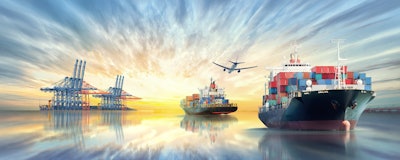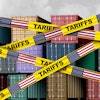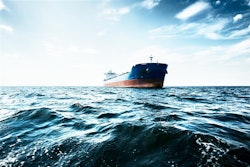
Complete autonomy has become the motto of the 21st century. There has been tremendous talk and investment in developing autonomous cars, buses and taxis. However, autonomous ships could be the next disruptive force in international transportation.
According to Allied Market Research, the global autonomous ship market is expected to hit $134.90 billion by 2030, growing a CAGR of 4.4% from 2020 to 2030. Increase in demand for cargo transportation and the trend of automation in marine transportation drive market growth.
Autonomy in ships: Next big thing in transportation
Although we might be years behind actually witnessing complete autonomous vehicles on the roads, the breakthroughs in artificial intelligence (AI) have opened several lucrative opportunities. A fully autonomous ship would have software to manage its movements instead of people and as the technology matures, we would see more and more autonomous ships floating on the water, taking care of the sea freight and reducing the burden of international transportation.
Key benefits of autonomous ships
Similar to AI, the autonomy in ships promises to improve safety, boost efficiency and allow humans to focus on qualitative work. It is observed that majority of the marine accidents are result of human error, therefore incorporation of semi- or fully-autonomous systems could help reduce the dependency on humans, making the oceans safer. In case of semi-autonomous ships, the data gathered from several sensors combined with AI algorithms could help the pilot and other crew members to make informed decisions.
Another benefit of autonomous ship is boosting the bottom line of the transportation company. Reduction or elimination of crew members from the ship decreases the overall cost on the voyage. Moreover, autonomous ships are quite different in design than conventional ships, which help effectively use space and save fuel. Needless to say, autonomous ships decrease expenses such as crew salaries and supplies.
Major challenges to overcome
However, the safety and ability of autonomous ships in congested waters are yet to be tested. There are several tests to clear and bundle of regulations to sort before autonomous ships get a green signal.
The regulations regarding shared water need to be reviewed before autonomous ships become commercial. The commercial regulations are developed considering that there would be crew members on board and the autonomous ships aim to reduce the number of crew members to zero. Thus, the International Maritime Organization needs to assess and improve the international law that complies with the new reality that recognizes AI as captain.
Unless and until there are proper R&D and updates regarding international regulations for autonomous ships, the future for the industry is filled with challenges. However, the rapid development and acceptance of autonomous cars would change the scenario in favor of autonomous ships.
In the future, the advancements in sensor technology would create more reliable data, and improvements in big data and AI would help improve autonomous technology. In addition, integration of such data to a ship’s prime systems such as cranes, main engines, bow thrusters, propellers and deck machinery would make the autonomous ships safer. The improvements in fail-safe instructions would make the autonomous ship even more reliable in case the crucial parts of the ship fail. For instance, authorities can dispatch people to make necessary repairs and an emergency protocol can establish with the next port to ensure the safety of the ship while still at sea.
Although there are several hurdles yet to overcome, advancements in AI and improvements in international laws would help autonomous ships see the new horizon.





















